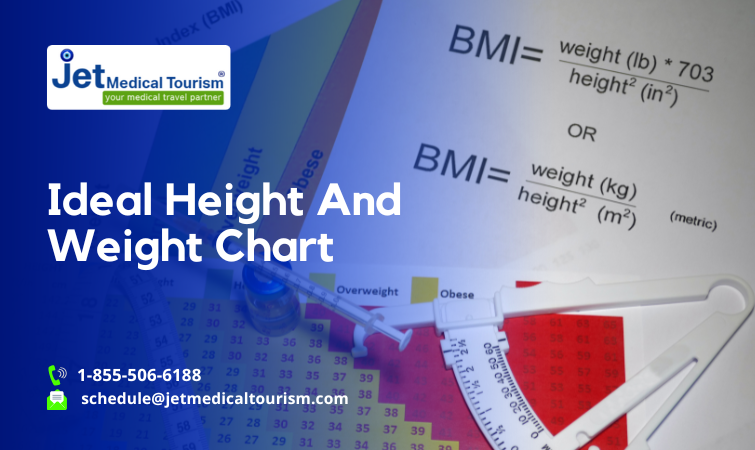How is Fat Related to Obesity?
 Obesity is a health condition characterized by an excess of “body fat”. Obesity is marked by Body mass index (BMI) which is calculated by dividing your weight in pounds (lb) by your height in inches (in) squared and multiplying by a conversion factor of 703.
Obesity is a health condition characterized by an excess of “body fat”. Obesity is marked by Body mass index (BMI) which is calculated by dividing your weight in pounds (lb) by your height in inches (in) squared and multiplying by a conversion factor of 703.
The formula for BMI is:
- Formula: weight (lb) / [height (in)]2x 703
- Example: Weight = 200 lbs, Height = 5’5″ (65″)
- Calculation: [200 ÷ (65)2] x 703 = 33.27 BMI
Clinically, a person is said to be overweight when he has a body mass index between 25 and 29.9. BMI is a not a direct estimate of adiposity and doesn’t account for the excess weight associated with a large muscle mass in some individuals.
Obesity can better be defined as the percentage of total body fat.
Men are said to be obese when their “percentage of body fat” is at least 25 while women are said to be obese when they have a body fat percentage of 35.
Percentage of body fat can be measured accurately with such techniques as:
- Skin-fold thickness
- Bio-electrical impedance
- Underwater weighing
However, these methods are not usually applied in clinical practice, where BMI is used in assessing obesity.
Obesity in the United States
In the United States, obesity is increasing in prevalence in both adults and children. The same applies to other industrialized nations of the world. Over the past 10 years, this incidence has risen by more than 30 percent.
An average of 65 percent of adults in the United States are overweight and not less than 33 percent are obese.
- Physiologically, obesity results from greater intake of energy (feeding) than greater energy expenditure (physical activities and exercise). The weight of the body increases when food consumption exceeds energy expenditure.
- As a result, most of the excess energy is stored as fat.
- This implies that obesity is caused by excess energy intake.
- In fact, for every 9.3 calories of excess energy that enters the body, approximately 1 gram of fat is stored.
What is fat, or adipose tissue?
Fat is composed of adipocytes, also called lipocytes or fat cells. These cells are made up of loose connective tissue called adipose tissue.
What is the role of adipose tissue in human metabolic health?
The primary role of adipose tissue is to manufacture (synthesis) and store energy in the form of fat. It accumulates the extra calories, and releases the energy in a time of shortage.
- They play a vital role in stabilizing the glucose levels in the blood.
- Any dysfunction of fat cells would lead to dysregulation of blood glucose levels.
- It is important to understand this point.
How is adipose tissue or fat related to obesity?
Obesity is not dependent on the amount of body weight. Rather, obesity is dependent on the “amount of fat” in a person – specifically adipose tissue.
- This tissue is located under the skin, but is also found around internal organs to provide padding.
What is a major cause of obesity in America?
A sedentary lifestyle is one of the most significant causes of obesity in the United States. Not only does a sedentary lifestyle increase the risk of obesity, but it also increases the risk of:
- cardiovascular diseases
- diabetes
- high blood pressure
- depression
- anxiety, and
- colon cancer
What is a sedentary lifestyle?
If a person lives an inactive lifestyle with little to no physical activity, then basically they are living a sedentary lifestyle. Another term frequently used in the United States to describe a sedentary lifestyle is “Coach Potato”.
Being a coach potato is not a healthy choice. It can diminish quality of life, contribute to the development of chronic diseases and result in obesity.
Activities typically related to a sedentary lifestyle, include:
- Reading, sitting or watching television for much of the day
- Playing video games or using a computer for much of the day
Living a “Coach Potato” lifestyle decreases muscle mass and increases body fat. Remember what we said earlier, obesity is not dependent on the amount of body weight, but rather obesity is dependent on the “amount of fat” in a person.
Can a person break free from a sedentary lifestyle?
Breaking free from a sedentary lifestyle can be tough for many of us. Research studies show that the average American spends about 93% of their lives indoors.
Of that, we are sitting for approximately 70% of each day.
- The typical pattern is that we wake up, take showers, eat breakfast, and sit in congested traffic or public transportation until we arrive at work.
- Then we sit at our desks, check emails, answer phones, perform work duties, order lunch, eat at our desk and do more work until we leave.
- When work ends, we sit in traffic during our commute home, grab fast food on the way or eat unhealthy snacks at home, get the kids ready for bed, and finally go to sleep – starting the same routine all over again the next day.
- Because of the internet and advances in technology people today can work, earn a living, shop, pay bills, and Facebook all without leaving the comforts of a couch, sofa or chair.
- This type of inactivity and sedentary lifestyle is a recent phenomenon in the evolution of the human being.
And a sedentary lifestyle can be detrimental to health and lead to overweight and obesity. No wonder people always feel tired, stressed and struggle to lose weight… but you can do something about it!
Your health depends on your movement
Yes, that’s right. Your health depends on regular physical activity. And you can do things throughout the day to break free from living a sedentary lifestyle… thanks to the miraculous human body.
Did you know that the body is one of most amazing machines on the planet?
- It was built for movement. Good old fashion body movement!
- Movement is ancient. For millions of years, the body has perfectly evolved to perform three basic functions for survival – eat, breath, and move.
- Since the caveman era, constant movement or physical activity such as walking, hunting, running, crawling, climbing, jumping, lifting, swimming and fighting was demanded from the environment.
Simply put, physical activity is fundamental for human survival!
Why is physical activity important?
Regular physical activity is important for good health because it helps reduce body fat, results in weight loss and decreases a person’s risk of developing certain diseases.
Benefits of regular physical activity include:
- Helps you sleep better.
- Helps the body create chemicals that make you feel good.
- Helps your body burn calories – this combined with eating few calories will create a “calorie deficit” which leads to weight loss.
- Helps you “maintain” the weight loss that you worked so hard to achieve.
- Most importantly, keeping active reduces risks of cardiovascular disease and diabetes beyond that produced by weight reduction alone.
Increasing your body movement and living a more active lifestyle can also help to:
- Maintain your ideal weight.
- Reduce symptoms of depression and anxiety.
- Reduce arthritis pain and associated disability.
- Reduce risk of heart disease, high blood pressure, type 2 diabetes, heart attack, stroke, osteoporosis, and several forms of cancer.
What is the function of the heart and cardiovascular system?
The circulatory system, also called the cardiovascular system is made up of the heart and blood vessels, including arteries, veins and capillaries. The heart is the key organ in the cardiovascular system and is responsible for the pumping action.
The heart pumps blood through a network of vessels to our body’s tissue. With every beat of the heart, blood is circulated throughout our bodies, carrying oxygen and nutrients to all our cells.
At the same time, the circulated blood removes carbon dioxide and metabolic waste made by our cells. The cardiovascular system is our body’s ultimate lifeline and is vital to sustain life.
- Every day, your hard-working heart beats about 80,000 to 100,000 times.
- During this 24-hour time period, it pumps approximately 6,000-7,000 liters (1,500-2,000 gallons) of blood through 60,000 miles of blood vessels, arteries and capillaries that link together our cells, organs and body parts.
Find out if you qualify for the Tijuana Mexico Gastric Sleeve by clicking through to our online application form or contact us today to find out more.
[button link=”https://jetmedicaltourism.com/apply/” type=”big” color=”blue” newwindow=”yes”] See If You Pre-Qualify[/button]
[button link=”https://jetmedicaltourism.com/contact/” type=”big” color=”blue” newwindow=”yes”] Contact Us Today[/button]


